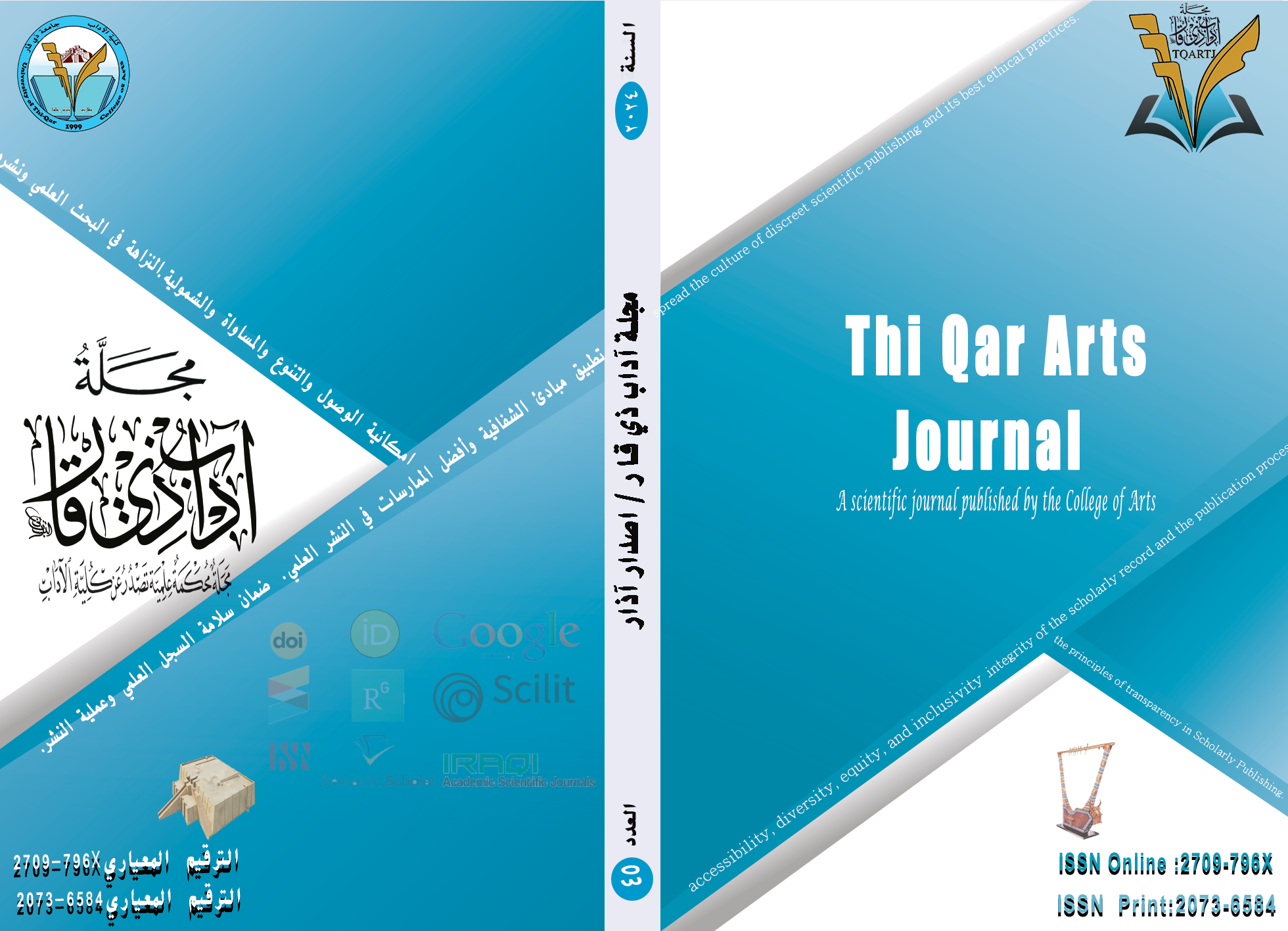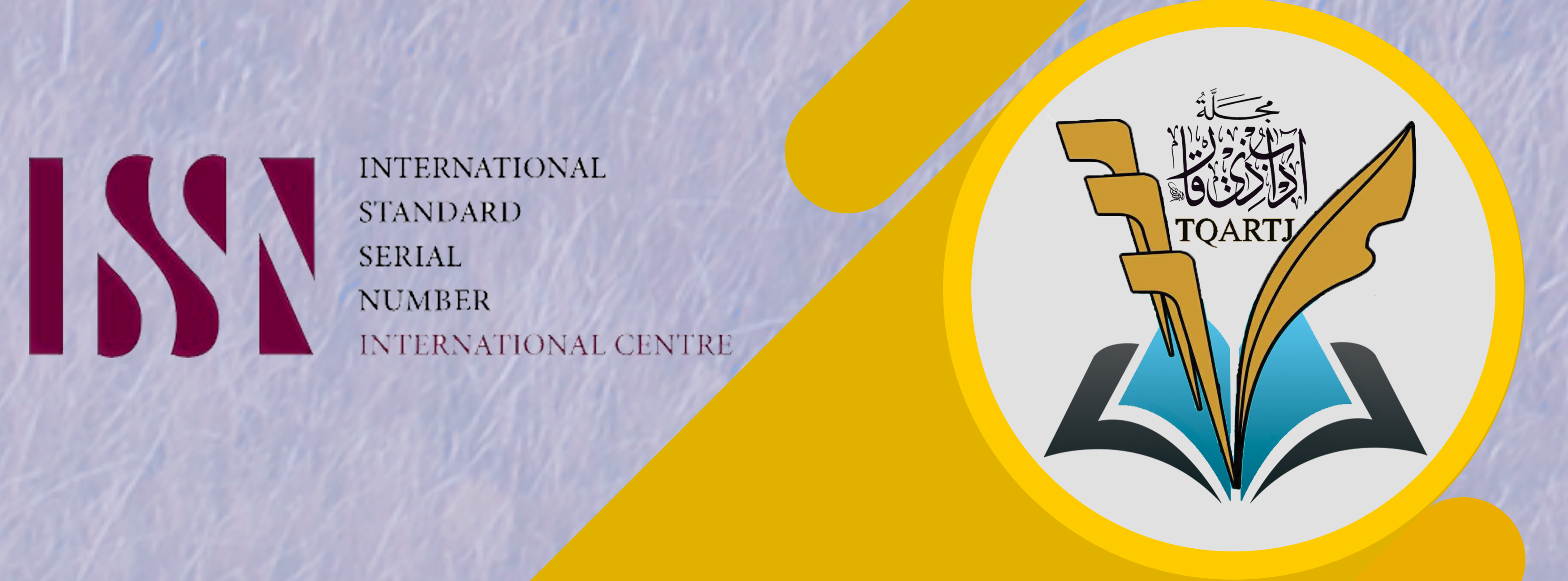صناعة السجاد وأثرها على اقتصاد إيران في العصر القاجاري 1796-1899
DOI:
https://doi.org/10.32792/tqartj.v3i45.570الكلمات المفتاحية:
السجاد ، الحرف والصناعات ، الملوك القاجاريين ، التجارةالملخص
يعد موضوع البحث من المواضيع التاريخية المهمة؛ وتكمن أهميته في كون نسج السجاد صناعة تتمتع بمكانة خاصة مقارنة بالصناعات والحرف الشائعة والتخصصات الفنية المعروفة، وقد زاد استخدام الزخارف والنقوش الفنية المختلفة على السجاد هذه الصناعة رونقاً وجمالاً، حتى اصبحت عامل جذب فاعل للسواح الأوربيين والمستثمرين الأجانب آنذاك.
وقد أرتأينا أن نتناول في بحثنا هذا تطور هذه الصناعة، وكيفية تحولها من حرفة في المنازل والقرى إلى صناعة حضرية مهمة شكل منتجاتها الحجم الأكبر من صادرات البلاد؛ ونسلط الضوء على دور الملوك في إنشاء ورش نسج السجاد وتطويرها، وخاصة الورش التي أنشئت في القصور والمساجد الملكية، وكذلك بينا مساهمة الأثرياء ورجال البلاط في هذا المضمار، ومدى الارتباط الذي شهده فن الرسم بهذه الصناعة، بعد أن أدخل النساجون زهور الحرير التي كانوا ينسجونها باستعمال الأنوال اليدوية؛ وفضلاً عن ذلك سلطنا الضوء على الأجواء الفكرية والثقافية التي أحاطت بالفنانين خلال تلك الحقبة، ومدى تأثرهم بالثقافة الغربية، وانعكاس ذلك على صناعة السجاد خصوصاً، وعلى العمارة والفنون الأخرى عموماً؛ وبذلك اشتمل بحثنا هذا دراسة مقتضبة لموضوع البحث، مع تحليل لبعض التفاصيل ذات العلاقة به، مستندين إلى العديد من المصادر الفارسية.
التنزيلات
المراجع
First: Dissertations and Theses
Muslim Mohammed Hamza Al-Amidi, “Abbas Mirza and His Role in the Modernization of Iran 1798-1833,” Ph.D. dissertation, College of Arts, University of Baghdad, 2011.
Muslim Mohammed Hamza Al-Amidi, “Amir Kabir as a Model for Modernization in Iran in the Mid-Nineteenth Century,” Master’s thesis, College of Arts, University of Baghdad, 2007.
Second: Books in Persian
A.N. Kuznetsova, “Around the Modern History of Iran: Political, Economic, and Social Conditions in Iran from the End of the 18th Century to the First Half of the 19th Century,” translated by Cyrus Izadi, Tehran, 1386 (2007).
Ahmad Ashraf, “Historical Obstacles to the Growth of Capitalism in Iran during the Qajar Period,” Tehran, 1359 (1980).
Ehsan Yarshater, “History and Art of Carpet Weaving in Iran: Carpets of the Qajar Era,” translated by R. La’li Khamseh, Tehran, 1383 (2004).
Ahmad Seif, “The Economy of Iran in the Nineteenth Century,” Nashr Cheshmeh, Tehran, 1373 (1994).
Youssef Hassan Ahmadi and Donald R. Hill, “Illustrated History of Islamic Technology,” translated by Nasser Movafaghian, Tehran, Scientific and Cultural, 1375 (1996).
Arthur Cecil Edwards, “The Persian Carpet,” translated by Mahin Dokht Saba, Farhangsara, Tehran, 1368 (1989).
Ernest Orsol, “Orsol’s Travelogue,” translated by Ali Asghar Saeedi, Tehran, 1353 (1974).
Arnold Henry Savage Landor, “Political, Social, Cultural, Economic, and Commercial Conditions in Iran at the Threshold of Constitutionalism ‘In the Land of Desires’,” Vol. 2, translated by Ali Akbar Abdolrashidi, Tehran, 1392 (2013).
S.G.W. Benjamin, “Iran and Iranians in the Era of Naser al-Din Shah,” Vol. 3, translated by Mohammad Hossein Kurd Bacheh, Ettela’at, Tehran, 1394 (2015).
Asghar Mahdavi, “Iraj Afshar, Yazd, in the Documents of Amin al-Zarb (1288-1330),” Talaie Tehran, 1380 (2001).
Amir Hossein Khanji, “History of Shah Ismail Safavi (The Gift of Arvan to Shiism),” 1394 (2015).
Amina Pakravan, “Agha Mohammad Khan Qajar,” Nil, 1377 (1998).
Eugène Aubin, “Iran Today 1906 - 1907,” translated by Ali Asghar Saeedi, Zavvar, 1362 (1983).
Eugène Flandin, “Eugène Flandin’s Travelogue to Iran,” translated by Hossein Noor Sadeghi, Tehran, Eshraqi.
“Iranians from the American Perspective: Qajar Iran in American Newspapers,” translated by Alireza Saatchian, Parseh, Tehran, 1397 (2018).
Babak Ahmadi, “From Pictorial Signs to Text: Towards a Semiotics of Visual Communication,” Nashr Markaz, Tehran, 1368 (1989).
Patricia Baker, “Safavid Carpets and Nineteenth-Century European Beliefs,” in “Art and Architecture of the Safavids,” translated by Mazda Moheb, Farhangian-e Honar Publications, Sheila Ketabi, Tehran, 1385 (2006).
Parviz Tanavoli, “Iranian Pictorial Carpets,” Soroush, Tehran, 1368 (1989).
Parviz Omrani and Hossein Esmaeili Shokri, “Historical Texture of the City of Tabriz,” First Edition, Samira Publishing House, 1358 (1979).
Pietro Della Valle, “Travelogue,” translated by Shoa’eddin Shafa, Tehran, 1348 (1969).
Jean-Baptiste Tavernier, “Tavernier’s Travelogue,” translated by Abolghasem Nouri, edited by Hamid Shirani, Third Edition, Sanai and Taid Publications, Isfahan, 1363 (1984).
John Foran, “Fragile Resistance: A History of Social Transformations in Iran from the Safavids to the Years After the Islamic Revolution,” translated by Ahmad Tadayon, Vol. 14, Rasa, Tehran, 1377 (1998).
Charles Issawi, “The Economic History of Iran during the Qajar Era 1215-1332 AH,” translated by Ya’qub Azhand, Second Edition, Gostareh Publishing, Tehran, 1369 (1990).
George N. Curzon, “Iran and the Iranian Question,” Vol. 4, translated by Gholamali Vahid Mazandarani, Scientific and Cultural, Tehran, 1373 (1994).
Haj Mirza Mohammad Ali Moein al-Sultanate, “Travelogue to Chicago,” edited by Homayoun Shahidi, First Edition, Scientific, Tehran, 1363 (1984).
Hossein Mir Jafari, “History of Political, Social, and Cultural Transformations in Iran during the Timurid and Turkmen Periods,” Tehran, 1319 (1940).
Hossein Yavari and Zeinab (Reyhaneh) Rajabi, Fa’ezeh Ghaderi, “Iranian Carpets during the Safavid Era,” Tehran, Sayehban-e Honar, 1393 (2014).
Khashayar Hendieh and Ghazi Zadeh, “Aesthetic Specialties of Bird Motifs in Seljuk Art,” Visual Arts Motif Patterns, 1391 (2012).
Daniel Walker, “(Safavid Era Carpets) History and Art of Carpet Weaving in Iran (Based on Encyclopaedia Iranica),” supervised by Ehsan Yarshater, translated by R. La’li Khamseh, Niloufar Tehran, 1284 (2005).
Denis Wright, “The Role of England in Iran,” translated by Faramarz Faramarzi, Farokhi, Tehran, 1361 (1982). 40. Denis Wright, “The Role of England in Iran,” translated by Faramarz Faramarzi, Farokhi, Tehran, 1361 (1982).
Fazlollah Hashemite Radavi, History of Carpets, The Process of Change and Evolution of Bafi Carpets in Iran, Vol. 1, Samt, Tehran, 1387.
Mohammad Hossein Sa’adat, History of Bushehr, Heritage Foundation, 1391.
Mohammad Mashiri, Explanation of Ajoodanbashi’s Mission (Hossein Khan Nezam al-Dowleh), with the text of Abdul-Fattah Garmaroudi’s travelogue, Ashrafi, Tehran, 2536.
Mehdi Kiyani, Bazaargani and Guilds of Pashmina in the Safavid Era, Great Islamic Encyclopedia Center, Center for Iranian and Islamic Research, 1399.
Heinrich Brugsch, A Journey to the Court of the Sovereign, Vol. 3, translated by Mohammad Hossein Kurd Bacheh, Tehran, 1389.
William Floor, Ancient Industries, 1800-1925, translated by Alireza Baharlou, Tehran, Peikareh, 1362.
Third: Research A - Research in Persian
Ahmad Labbaf Ferd, Jahanbakhsh Savaqeb, Factors Affecting the Growth of Carpet Exports and its Economic Consequences in Iran in the 19th Century, History of Iran, No. 20(5/87), Summer, Autumn, 1395.
Pooran Tahouni, Mostafa Malaei, Study of Factors and Methods of Revival and Prosperity of the Carpet Industry during the Qajar Period, Scientific Journal of the History of Islam and Iran, Al-Zahra University (S), 29th Year, New Series 43, Autumn 1398.
Rasoul Javan Mansoureh Etehadieh, “Transformations in the Trade of Hand-Woven Carpets in Iran during the Qajar Period with a Focus on the International Carpet Market”, Cultural History Studies: Journal of the Iranian Historical Society, Second Year, Issue Five, Autumn 1389.
Taghi Hamidi Manesh, Nahid Jafari Dehkordi, The Role of Safavid Rulers in the Advancement of the Silk Carpet Industry in Iran, Third Year, Issue 1, Spring and Summer 9.
Shiva Tavakoli and Amir Hossein Chitsazian, Behzad Nik Andish, The Beauty and Symbolism of Bird Motifs in Safavid Era Carpets, Art Biannual, Shahid Chamran University of Ahvaz, Fourth Period, Issue Eight - Year 94.
Abed Taqva, Re-reading the Commercial Transformations of the Carpet Industry in the Safavid Era, Scientific Research Journal of the Iranian Carpet Association, Issue 12, Spring 1388.
Adel Shabani Moghaddam, The Ambassador of Iranian Art in World Museums (Safavid Era Tabriz Carpets), History of Foreign Relations, Eighteenth Year, Magazine, Issue 71, Summer 1396.
Alireza Khaje Ahmad Attari, The Influence of the West on Qajar Era Carpets, Scientific Biannual of the Iranian Carpet Association, Issue 31, Spring and Summer 1396.
Fereshteh Jahani, The Export of Iranian Carpets to America during the Qajar Era, Contexts and Challenges, History and Civilization of Islam, Year 18, Issue 38, Spring 1401.
Laleh Ahani, Mohammad Khazaei, Abolfazl Abdollahi Fard, Analysis of Power Symbols in Pictorial Carpets of the Qajar Era, Scientific Research Biannual, Eleventh Year, Issue Twenty-One, Spring and Summer 1400.
Mehdi Jiriaei, Hossein Moftakhari, and Mohammad Soleimani Mehranjani, Study and Analysis of the Internal and External Trade of Sultanabad Iraq (1360-1324/ 1906-1941), Magazine, "Historical Research Quarterly, Issue Two.
B - Research in Arabic
• Nahla Naeem Abdul Aali, The Economic and Social Conditions in the City of Tabriz in the Safavid Era 1501-1722, Basra Research Journal for Human Sciences, Volume 44, Issue 3, 2019.
Fourth : Websites
التنزيلات
منشور
إصدار
القسم
الفئات
الرخصة
الحقوق الفكرية (c) 2024 Assistant prof .Dr.Nahla Naeem Abdulali

هذا العمل مرخص بموجب Creative Commons Attribution 4.0 International License.
تطبق المجلة رخصة المشاع الابداعي (a Creative Commons Attribution 4.0 International) . تسمح هذه الرخصة للمؤلفين بالاحتفاظ بحقوق النشر لأوراقهم. ولكن هذه الرخصة تسمح لأي مستخدم بتحميل، طباعة، استخراج، إعادة استخدام، أرشفة، وتوزيع المقال، طالما يتم إعطاء الائتمان المناسب للمؤلفين ومصدر العمل. تضمن الرخصة أن يكون المقال متاحًا على نطاق واسع قدر الإمكان وتضمين المقال في أي أرشيف علمي.



















